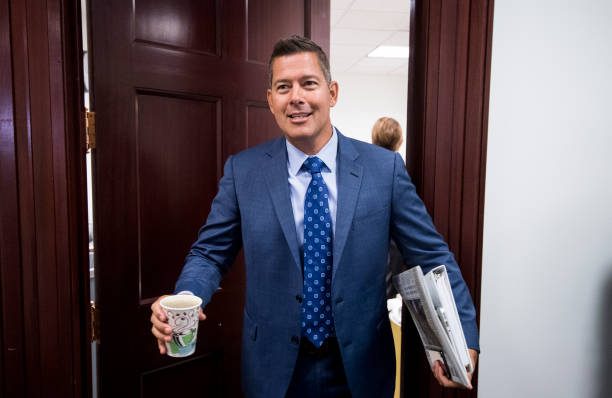The tragic midair collision at Reagan National Airport on Wednesday evening marked a swift and daunting challenge for Sean Duffy, who had just been sworn in as Secretary of Transportation. Only hours into his new role, Duffy faced one of the most pressing crises of his tenure, as the accident claimed the lives of 67 people.
Although Duffy will not directly lead the investigation into the collision, which is being handled by the National Transportation Safety Board (NTSB) with support from the Federal Aviation Administration (FAA), he is thrust into the spotlight as the public face of the government’s response. As the first official to address the media after President Trump’s remarks on the tragedy, Duffy now finds himself responsible for navigating difficult questions concerning air traffic safety, including the nationwide shortage of air traffic controllers and potential changes to the airspace in the Washington, D.C. region.
In a statement released early Thursday, Duffy expressed his belief that the crash was “preventable.” He reassured the public, saying, “Everyone who flies in American skies expects that we fly safely…That didn’t happen last night, and I know that President Trump, his administration, the FAA, the DOT, we will not rest until we have answers for the families and for the flying public.”
Duffy’s swift confirmation as Secretary of Transportation had occurred just the day before, and now, as he leads the Department of Transportation (DOT), he is responsible for overseeing a workforce of 55,000 employees. His new position encompasses some of the most complex challenges in the country, including ensuring the safety of aviation, highways, and railways. Other significant issues awaiting his attention include Boeing’s recent struggles with quality control, threats of strikes by airline labor unions, and the growing emphasis on climate-related initiatives such as electric vehicles and infrastructure for charging stations.
Adding to the complexity of Duffy’s role is the FAA’s lack of a permanent administrator. Since Mike Whitaker’s resignation earlier this month, the FAA has been operating without a permanent leader, leaving a significant leadership void. In a move to address this, President Trump announced that Chris Rocheleau, a former chief operating officer for the National Business Aviation Association, will serve as acting head of the FAA.
Ray LaHood, who served as transportation secretary under President Obama, commented on the challenges Duffy faces, noting that although the Department of Transportation and the FAA have professional staff in place, they urgently need a permanent FAA administrator to provide consistent leadership. LaHood’s experience with a similar tragedy—the crash of Colgan Air Flight 3407 in 2009—shaped his perspective. He emphasized that the collaboration between Congress and families of the victims led to significant reforms in pilot safety, rest regulations, and other safety measures.
Duffy’s background as a former U.S. representative from Wisconsin and a Fox Business host positions him as a seasoned political figure, though his role as transportation secretary will test his ability to respond to crises, manage complex transportation issues, and advance safety reforms. His first day also saw him begin rolling back policies related to diversity, equity, and inclusion within the DOT, aligning with the broader priorities of the Trump administration.
As Duffy confronts this crisis, his ability to lead and implement effective solutions will be under intense scrutiny, particularly as he navigates the aftermath of this devastating accident.




